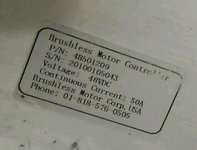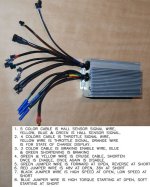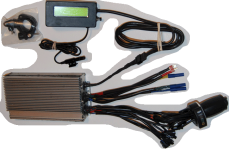Chalo
100 TW
A while back I received a MAC motor and controller in trade for some fabrication work. Now I have a friend who could use an e-bike for rehabilitation, and I want to use the motor for that.
My concern is that the controller that was included with the motor is 48V, 40A. I thought MAC motors were intended for used with 25A controllers. Is this correct? I'd rather not put the motor at risk of damage, and I'd also rather not buy a 40A capable battery if I don't have to.
What's a good controller for MAC? KT, or is there something more compatible?
The wiring connectors are a mess, and my intention is to redo them, so it doesn't matter so much what the controller comes with. Also, I have no idea the kV of the motor, or its gear reduction, so I'd like to be able to run the controller on 36V or 48V as necessary to set the road speed in a good range.
Any insights are appreciated.
My concern is that the controller that was included with the motor is 48V, 40A. I thought MAC motors were intended for used with 25A controllers. Is this correct? I'd rather not put the motor at risk of damage, and I'd also rather not buy a 40A capable battery if I don't have to.
What's a good controller for MAC? KT, or is there something more compatible?
The wiring connectors are a mess, and my intention is to redo them, so it doesn't matter so much what the controller comes with. Also, I have no idea the kV of the motor, or its gear reduction, so I'd like to be able to run the controller on 36V or 48V as necessary to set the road speed in a good range.
Any insights are appreciated.








